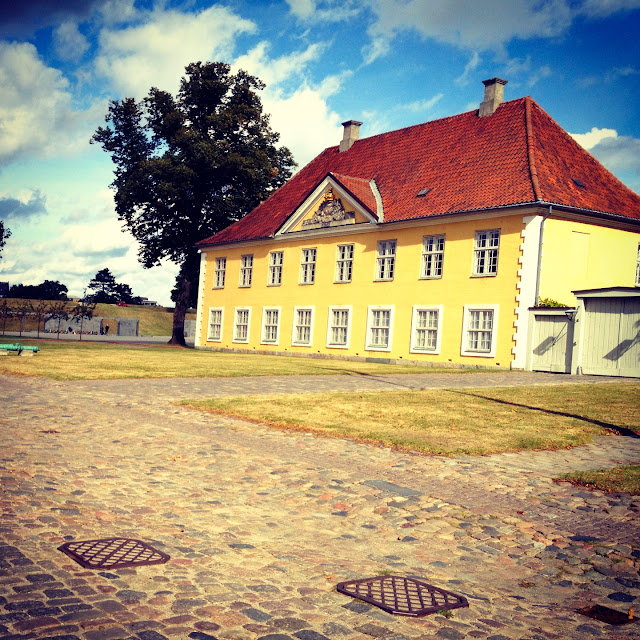I called it the Star! because this is how it looked on the map! Each point of the star, or bastion has a different name! The five bastions are named as follows: The King’s Bastion (Kongens Bastion), The Queen’s Bastion (Dronningens Bastion), The Count’s Bastion (Grevens Bastion), the Princess’s Bastion (Prinsessens Bastion) and the Prince’s Bastion (Prinsens Bastion). It was a really nice park with a trail outlining the inside of the star full of joggers!
Churchill Park!
:) Waiting for me as I was wandering around taking pictures!
St. Alban's Church, locally often referred to simply as the English Church, is an Anglican church. Such a pretty church! I loved it!
It was built from 1885 to 1887 for the growing English congregation in the city. Designed by Arthur Blomfield as a traditional English parish church in the Gothic Revival style, it is in a peaceful park setting at the end of Amaliegade.
The church is built in limestone from the Faxe south of Copenhagen, knapped flint from Stevns and Åland stone for the spire. The conspicuous use of flint as a building material, unusual in Denmark, is another typical trait from England where it is commonly seen in church buildings in the south of the country, particularly East Anglia.
The Citadel has two gates, King's Gate on the south side, facing the city, and Norway Gate on the north side of the edifice, which both date from 1663 as part of Ruise's original citadel. They are built in the Dutch Baroque style, and are on their interior side flanked by guardhouses.
Kings gate!
The Rows are six two-storey terraces which were originally built by Henrik Ruise as barracks for the soldiers based at the Citadel. The dorms measured four by four metres and contained two triple beds, a small table and two benches.
The Commander's House served as the residence of the commander of Kastellet. It was built in 1725 in the Baroque style by architect and master builder Elias Häuser who also designed the first Christiansborg Palace which burned in 1794.
The Church! There was a wedding going on as we were leaving!
On the King's Bastion, in the southwestern corner of Kastellet, stands a windmill. Built in 1847 of a Dutch type style. The mill at Kastellet is the last which is still working.
Poor Kevin! I was dragging him all around Copenhagen an he wasn't feeling so well! :(
Smedelinien is a system of outworks, separating the inner and the outer moat, located to the south and southwest towards the city. It consisted of four ravelins and three counter guard interconnected by long, low earthworks.
Goofy tour going on as we were leaving!
Swedish Words of the Day:
Star ("star") meaning Star
Krig ("kreeg") meaning War
Väderkvarn ("vee-der-k-von") meaning Windmill
Danish Words of the Day:
Stjerne ("ster-on-ey") meaning Star
Krig ("krig") meaning War
Vindmølle ("vind-moo-la") meaning Windmill
PEACE & LOVE,
Kevin & Amanda




























No comments:
Post a Comment